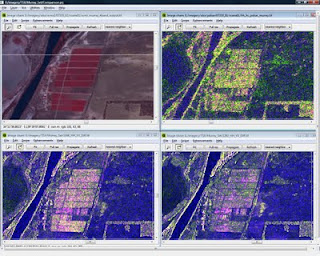Classic remote sensing classification type problems try to lump ground features, lets say vegetation cover, according to artificial man made boundaries. These boundaries never model reality and hence the premises used to perform classification are false, this makes supervised classification unpopular. The other approach is unsupervised classification, where clustering techniques are used to identify naturally occuring variations and groups in the data; classes are built from clusters so identified. After this again comes the human intervention and learned or in some cases guesswork assignment of vegetation type to each class.
In between the 2 extremes are semi-supervised approaches, how strong the human intervention is determines the quality of the output from the classification problem. All this does not address the problem that classification itself is a fallacy, an ill posed problem and groups are not well modelled for algorithms to yield desired results.

Consider the data fusion scenario shown below with multi-temporal, multi-polarization, multi-wavelength SAR and Optical images. First and boring housekeeping is to register all the images together, which can be done after fair bit of fiddling, picking ground control points by eye (automatic registration does not work well across L-band SAR and Optical) and choosing a suitable non-linear transform to map from slant range to ground range ( why can't the PALSAR polynomial be easier to access and more accurate ?).

Consider the hypothetical problem of classifying river, vineyard, centre pivot irrgation areas and scrub. The vineyard alone as a class is not well defined, there are leafless vines which are virtually invisible in optical but visible in x-band SAR. The river has bright pixels in SAR which are tree trunks sticking out of the water forming dipoles. Pure pixel based statistics will fail at classification here. What can be achieved is the appreciation of the variablity and the detail visible in each cover type at different wavelengths.
You can work it out by Fractions or by simple Rule of Three,
But the way of Tweedle-dum is not the way of Tweedle-dee.
You can twist it, you can turn it, you can plait it till you drop,
But the way of Pilly Winky's not the way of Winkie Pop!
- Rudyard Kipling (Jungle Book)







